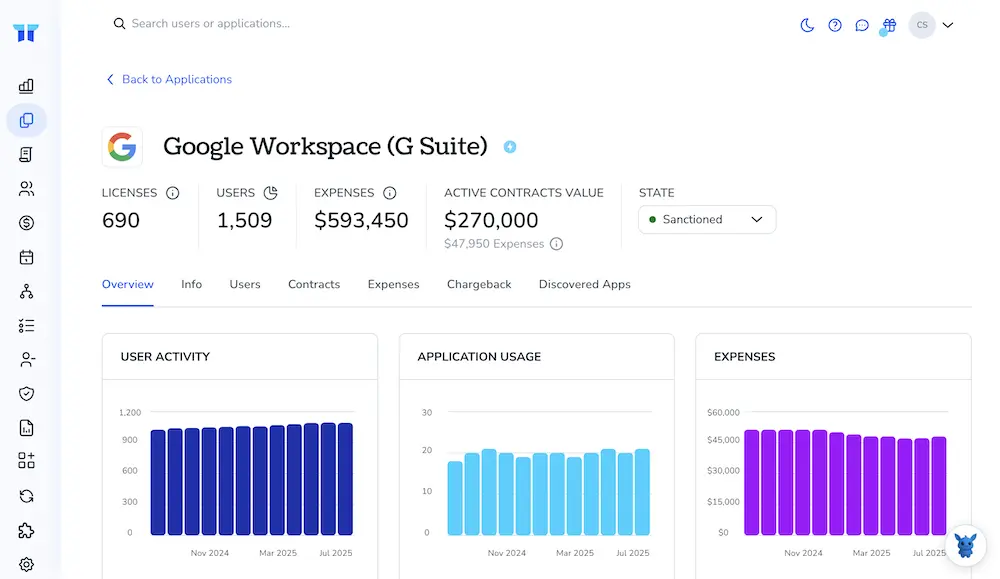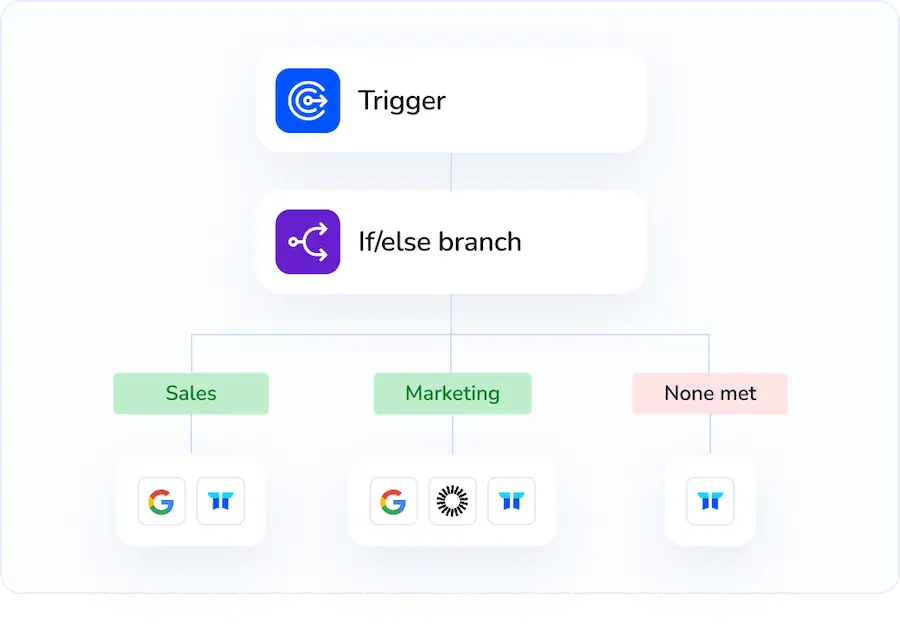3 Ways to Set Vacation Responders for Users in Google Workspace

Setting vacation responders in Google Workspace keeps messages clear and expectations set for colleagues and clients. It prevents missed updates and reduces back-and-forth while you’re away.
This guide walks through three ways to configure automated out-of-office replies for users , from simple Gmail settings to admin-level controls and scriptable options , so you can pick the approach that fits your team’s size and workflow.
Table of Contents
Use Google Workspace’s UI
Here you’ll use the Gmail settings in the Google Workspace UI to turn on or edit a vacation responder for a user mailbox.
Open Gmail settings
- Sign in to the Google Workspace account and open Gmail.
- Click the gear icon at the top right and choose
See all settings.
Locate the vacation responder
- In
Settings, stay on theGeneraltab. - Scroll down until you find the
Vacation respondersection.
Turn it on and set dates
- Select
Vacation responder on. - Enter the
First day. If you want it to stop automatically, enter aLast day. If you leave the last day blank, it stays on until you turn it off. - Add a
Subjectand the message body you want people to receive.
Choose who gets the reply
- Check
Only send a response to people in my Contactsif you want replies limited to contacts. - Check
Only send to people in my organizationto limit replies to your domain. Leave both unchecked to reply to anyone who emails you.
Save and verify
- Scroll to the bottom of the page and click
Save Changes. - Send yourself a test message from another account to confirm the auto-reply is working.
Edit or turn it off early
- Return to
Settings>General>Vacation responder. - Change dates or text, or select
Vacation responder offand clickSave Changes.
Notes
- Gmail sends the auto-reply to each sender only once every few days, not on every incoming message.
- Auto-replies aren’t sent for messages marked as spam or to some mailing lists.
- To set the vacation responder from the Gmail mobile app: open the app, tap the menu, choose
Settings, select the account, then tapVacation responderand set your message and dates.
These steps follow the Gmail vacation responder instructions in Google Workspace help.
Use Torii
Rather than configuring vacation responders directly in Google Workspace, you can use Torii, a SaaS Management Platform, to set vacation responder for user in Google Workspace. SMPs let organizations manage all their SaaS subscriptions and integrations from a single console, making it straightforward to programmatically provision/deprovision users, review subscription details, and handle other routine tasks.
Instead of performing the change manually inside Google Workspace, Torii allows you to automate the update so it runs whenever a defined trigger occurs - for example, a new hire, an offboarding event, a contract renewal, and so on. Automating this saves time when the same change must be applied repeatedly.
To set vacation responder for user in Google Workspace straight from Torii, follow these steps:
1. Sign up for Torii
Contact Torii, and ask for your free two-week proof-of-concept.
2. Connect your Google Workspace account to Torii
Once your Torii account is set up, connect your Google Workspace instance to Torii (assuming you already have an account). Here are the instructions for the Google Workspace integration.

3. Create a Torii workflow for Google Workspace
Inside Torii, create an automated workflow that updates the vacation responder for a user in Google Workspace. Open the Workflows tab, define the trigger that should initiate the change, then add an action that sets the vacation responder. From that point on, whenever the trigger is met, Torii will push the change to Google Workspace.

Use Google Workspace’s API
Here you’ll use the Gmail API to turn a user’s vacation responder on or off and set its message. The steps show the API call, the JSON body fields, and what credentials you need.
1. Confirm API and required OAuth scopes
- Enable the Gmail API for your project.
- Use one of these scopes for managing vacation settings:
https://www.googleapis.com/auth/gmail.settings.basic(preferred for settings)https://mail.google.com/(broader access if already in use)- If an admin needs to set this for other users, use a service account with domain-wide delegation and grant the chosen scope in the Admin console.
2. Obtain an access token
- For calls on the signed-in user, use OAuth 2.0 and request the scope above. Then the API call can use
meas userId. - For admin automation acting on another user, use a service account with domain-wide delegation and impersonate the target user when getting a token. The HTTP requests below assume you already have a valid
Beareraccess token.
3. Prepare the vacation settings JSON
- Fields you can send (types and behavior):
enableAutoReply(boolean) - turn the auto-reply on or off.responseSubject(string) - optional subject line.responseBodyPlainText(string) - plain-text reply.responseBodyHtml(string) - HTML reply (optional).restrictToContacts(boolean) - only send replies to contacts.restrictToDomain(boolean) - only send replies to users in your domain.startTimeandendTime(integer, milliseconds since Unix epoch) - optional window. If omitted, auto-reply applies immediately and indefinitely until disabled.
Example minimal payload:
{
"enableAutoReply": true,
"responseSubject": "Out of office",
"responseBodyPlainText": "I'm away until May 15. For urgent matters email [email protected].",
"restrictToContacts": false,
"restrictToDomain": false
}
4. Call the Gmail API to update the vacation settings
- HTTP method and endpoint:
PUT https://gmail.googleapis.com/gmail/v1/users/{userId}/settings/vacation - Replace
{userId}with the user’s email address orme(when acting as that user).
Example curl (assumes you have an access token in $ACCESS_TOKEN and the JSON body saved in body.json):
curl -X PUT \
-H "Authorization: Bearer $ACCESS_TOKEN" \
-H "Content-Type: application/json" \
-D @body.json \
"https://gmail.googleapis.com/gmail/v1/users/[email protected]/settings/vacation"
The API returns the updated VacationSettings JSON on success.
5. Verify result and troubleshoot common errors
- Success: HTTP 200 with the saved vacation settings.
- 401 Unauthorized: token expired or wrong scopes. Refresh token or request the correct scope.
- 403 Forbidden: service account lacks domain-wide delegation or the Admin console grant of the scope is missing. Confirm the service account has been given the scope and that you’re impersonating the right user.
- 404 Not Found: wrong userId. Use the exact email address or
mewhen authorized as that user. - 400 Bad Request: payload fields invalid (e.g., non-integer times). Ensure
startTime/endTimeare milliseconds since epoch if used.
If you need examples for obtaining tokens (OAuth or service-account impersonation) or exact field definitions, check the Gmail API documentation for the Users.settings vacation resource and for OAuth scopes.
Frequently Asked Questions
Open Gmail, choose See all settings, stay on General, enable Vacation responder, set start and optional end date, add subject and message, choose contacts or domain restrictions, save changes, then send a test email to confirm.
After connecting Google Workspace to Torii, create a workflow that triggers on events like off-boarding, then add the Set vacation responder action. Torii automatically pushes the predefined subject, body, and dates to the user whenever the trigger fires.
Use the Gmail API scope https://www.googleapis.com/auth/gmail.settings.basic for mailbox settings, or the broader https://mail.google.com/ scope if it’s already deployed. Either scope lets your app read and update vacation responder fields through PUT requests.
Leaving the Last day blank keeps the vacation responder active until you manually turn it off. Gmail will continue sending your auto-reply under the same rules, so you’re covered for open-ended leave or unexpected return-date changes.
No. Gmail limits auto-replies to one message per sender every four days and suppresses them for spam, mailing lists, or messages you receive while Bcc’d. This prevents reply loops and reduces unnecessary email noise while you’re away.
Create a service account, enable domain-wide delegation, grant it the Gmail settings scope in the Admin console, then impersonate the target user when requesting an OAuth token. Your app can call PUT /users/{user}/settings/vacation to set or clear their responder.

